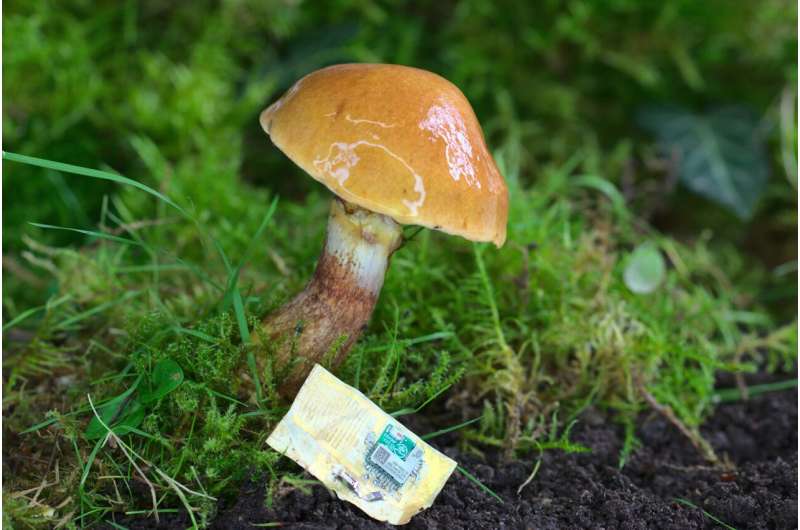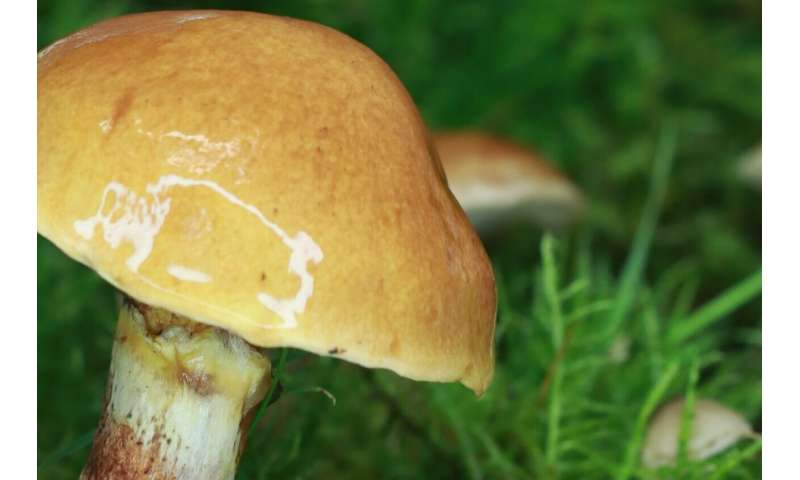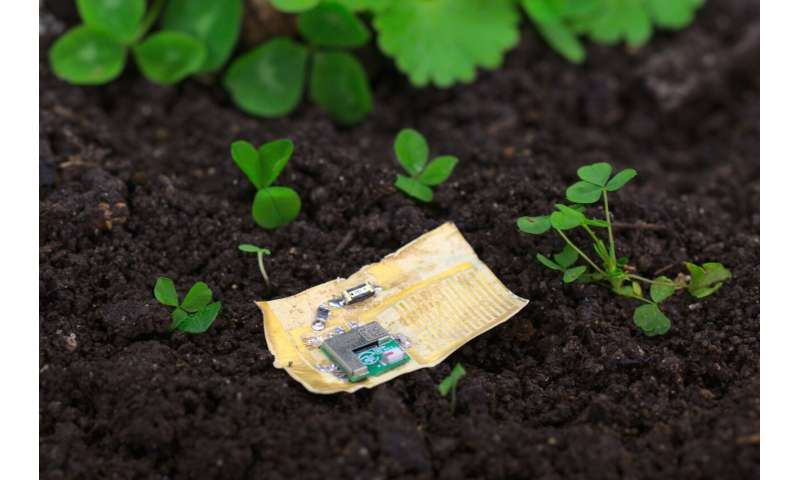November 14, 2022 report
Using mushroom skin as a base for computer chips

A team of researchers at Johannes Kepler University has found that the skin of a certain kind of mushroom can be used as a biodegradable base for computer chips. In their paper published in the journal Science Advances, the group describes how well it worked and how easily it could be cleanly discarded after the chip was no longer useful.
Most chips used to make electronic devices are set on a base of plastic. And unfortunately, the type of plastic used is not at all recyclable, which means most computer chips wind up in landfills around the world. Prior research has suggested that this leads to 50 million metric tons of electronic waste added to landfills each year.
The base of a chip is called a substrate and it was this part of the chip at which the team in Austria aimed their research efforts. After searching for a viable alternative, they came across Ganoderma lucidum, a type of mushroom that grows on dead hardwood trees. They noted that it grows a skin to cover its mycelium—its root-like part. Prior research has shown the skin protects the mushroom from other fungi and bacteria.
-

Fungal-grown mycelium skins are introduced as bioderived, degadable and sustainable substrate materials for elektronic sensor skins and batteries. Our findings can help to reduce electronic waste and render the electronics industry more environmentally friendly. Credit: Soft Matter Physics Division, Johannes Kepler University Linz. Images taken by Doris Danninger -

Fungal-grown mycelium skins are introduced as bioderived, degadable and sustainable substrate materials for elektronic sensor skins and batteries. Our findings can help to reduce electronic waste and render the electronics industry more environmentally friendly. Credit: Soft Matter Physics Division, Johannes Kepler University Linz. Images taken by Doris Danninger
After removing some of the skin from several samples, the researchers found that it was flexible, provided good insulation and was able to withstand high temperatures. They also noted that if kept away from light and moisture, the skin would last a long time. On the other hand, if it was exposed to such conditions intentionally, it would quickly decompose. These are all features that the team thought would make for a very good chip substrate.
The team developed a means for depositing metal electronic circuitry components onto the skin using physical vapor deposition, which was followed up with an ablated laser. Testing of the result showed that the skin worked nearly as well as the traditional plastic substrates and that it could withstand being bent repeatedly—they found no breakage after 2,000 bends. They also found the skin could be used to make battery components. More work is required to ensure that the skin works as hoped in an industrial setting. Also, a clean process for removing the skin from the chips for disposal still needs to be found.
More information: Doris Danninger et al, MycelioTronics: Fungal mycelium skin for sustainable electronics, Science Advances (2022). DOI: 10.1126/sciadv.add7118
© 2022 Science X Network





















